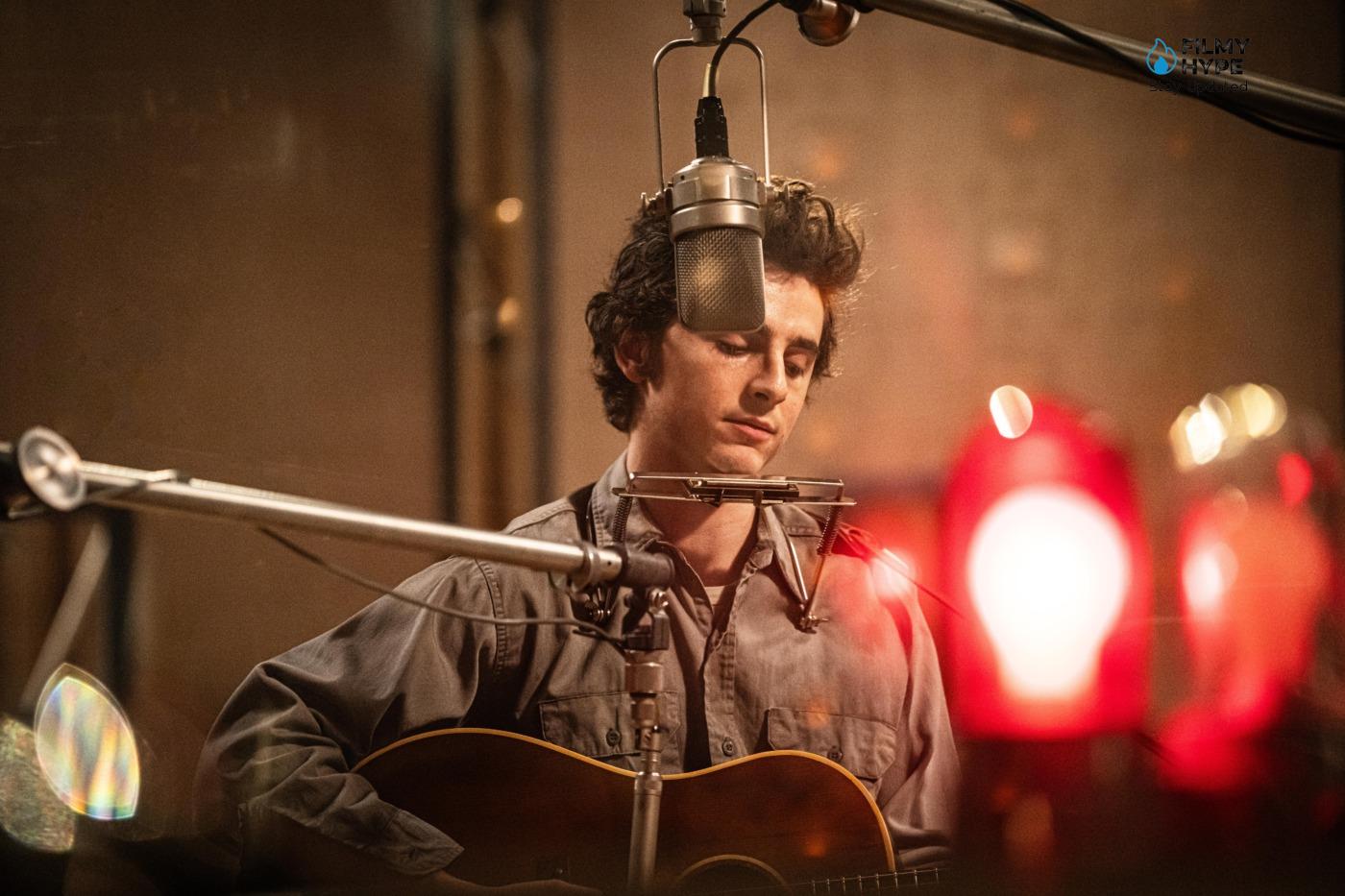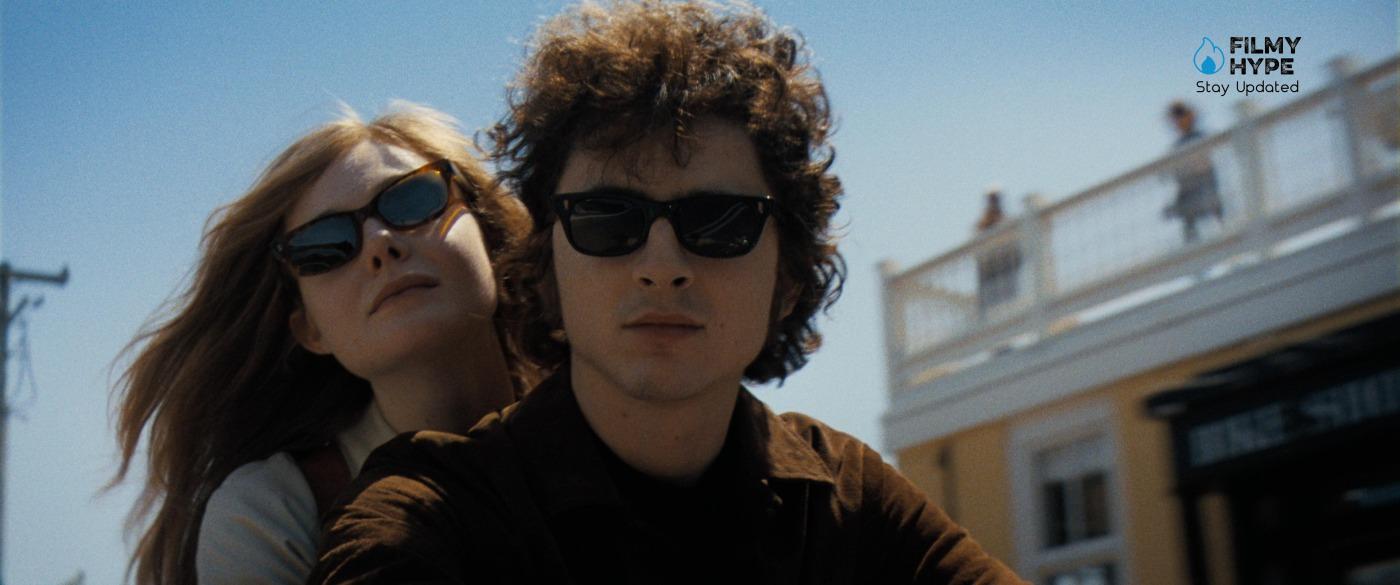A Complete Unknown Ending Explained: Why is Dylan Leaving on His Motorcycle?
Along with the title, A Complete Unknown, stolen from one of Dylan’s most loved songs, Like a Rolling Stone, that joke is a kind of manifesto, the disclaimer with which Mangold puts his hands forward and tells us: do not expect a philological biopic, because Dylan is an enigma, he has gone through existence to confuse the waters, to erase traces, reinventing styles and codes every time someone gave him a label. In the film, the boy Robert Zimmerman (for the registry) appears out of nowhere, thrown out of a car with a backpack and a guitar on his shoulder, against the background of a New York that looks like the set of West Side Story or a Hopper painting. He is twenty years old and is already busy reinventing genealogy. Better: a mythology. He says his name is Bob Dylan, he says he traveled with a circus, and that he learned to play the guitar from a couple of company cowboys.

Searchlight Pictures)
And so, he will do from then on, putting the reporters in difficulty, disseminating the path of false tracks, constantly on the run, in search of new horizons where his genius can explode. A Complete Unknown, directed by James Mangold and starring Timothée Chalamet as Bob Dylan, is a biopic that focuses on the early career of the iconic musician during the 1960s. From his arrival in New York in 1961 to his controversial performance at the 1965 Newport Folk Festival, the film explores Dylan’s meteoric rise, personal relationships, and his transition from folk to rock, which revolutionized music forever. Mangold moves away from traditional biopics, focusing on a specific period in Dylan’s life and weaving a narrative that combines historical moments with a pinch of mystery, symbolized in the enigmatic ending of the film.
A Complete Unknown Ending Explained: Why is Dylan Leaving on His Motorcycle?
The film culminates in Bob Dylan’s iconic performance at the 1965 Newport Folk Festival, where he introduced the electric guitar to an event traditionally dominated by folk. This decision sparked a mix of booing and applause from the public, marking a turning point in his career. Backstage, his relationship with figures like Pete Seeger and Joan Baez falters, highlighting the tensions generated by his change of style.
After the festival, Dylan visits his idol Woody Guthrie, hospitalized and sick, while “So Long, It’s Been Good to Know Yuh” sounds. In a symbolic-laden final sequence, Dylan climbs onto a motorcycle and disappears, leaving the screen black. This scene refers to the mysterious motorcycle accident that Dylan suffered in 1966, a year after Newport. The incident, the details of which were never fully clarified, marked a temporary withdrawal from public life. This ending encapsulates Dylan’s mystery and transformation, reflecting his constant evolution as an artist and his refusal to be pigeonholed.
Why was Dylan Booed in Newport?
Dylan’s performance in Newport in 1965 is a key moment in both the film and the history of music. Dylan broke the expectations of the public by performing with an electric guitar and a blues band, moving away from his folk roots. This irritated the purists of the genre, who considered it a betrayal of folk values. However, not everyone shared this feeling; part of the audience applauded, evidencing the generational and stylistic division in the music of the time. In reality, the boos could also have been the result of technical problems and the brevity of their set, of just three songs. The film captures the controversy, underscoring how Dylan used this moment to challenge expectations and reaffirm his artistic identity.

Searchlight Pictures)
Dylan’s Relationship with Joan Baez and Pete Seeger
In A Complete Unknown, the tensions and complicities between Dylan, Baez, and Seeger are explored. Joan Baez, played by Monica Barbaro, is portrayed as an ally and, at certain times, as a romantic figure in Dylan’s life. However, their relationship is complicated over time, especially after Dylan’s style change. For his part, Pete Seeger (Edward Norton) represents the traditional values of folk, colliding with Dylan’s more innovative vision. These dynamics reflect the cultural and artistic changes of the 1960s.
The Meaning of A Complete Unknown
The film’s title encapsulates Dylan’s journey from an absolute stranger to Greenwich Village clubs to a music icon who defied established norms. The film not only narrates his rise but also his struggle to maintain its authenticity in the face of the expectations of his audience and his refusal to be defined by a single genre or stage of his career.
Conclusion of A Complete Unknown
A Complete Unknown is not just a Bob Dylan biopic; It is an exploration of how an artist constantly reinvents himself and breaks barriers. His ending, with Dylan walking away on his motorcycle, symbolizes his refusal to be fully understood, leaving the public with the feeling that there is always something else to discover about him. Mangold manages to capture the essence of the mystery surrounding Dylan, delivering a film that, like its protagonist, avoids being categorized and leaves a lasting mark.

